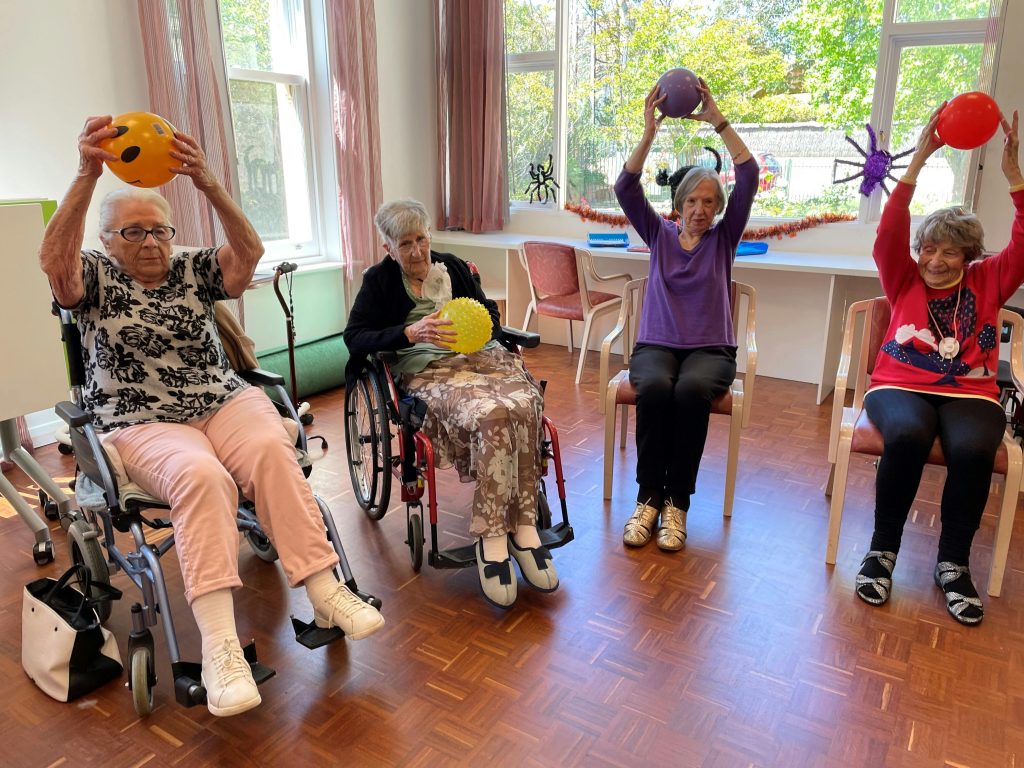Assisting individuals with activities of daily living (ADLs) while promoting their independence is crucial in maintaining their dignity and well-being. This article explores comprehensive strategies to achieve this balance, ensuring residents lead fulfilling lives.
Understanding Activities of Daily Living (ADLs)
Activities of Daily Living are essential tasks that individuals must perform to maintain personal care and a healthy lifestyle. These activities include:
- Bathing and Showering: Maintaining personal hygiene.
- Dressing: Selecting and wearing appropriate clothing.
- Eating: The ability to feed oneself.
- Mobility: Moving around, including walking and transferring (e.g., from bed to chair).
- Toileting: Managing bowel and bladder function.
- Continence: The ability to control bladder and bowel movements.
Instrumental Activities of Daily Living (IADLs)
IADLs are more complex activities related to independent living. These include:
- Managing Finances: Handling money and paying bills.
- Handling Transportation: Driving or navigating public transport.
- Shopping: Buying groceries and necessities.
- Preparing Meals: Planning and cooking food.
- Housekeeping: Cleaning and maintaining the living space.
- Managing Medications: Taking medications correctly.
- Communication: Using phones or other communication devices.
Promoting Independence in ADLs
Person-Centered Care
Adopting a person-centered care approach ensures that the assistance provided aligns with the individual’s preferences and needs. This method involves:
- Active Listening: Understanding resident’s wishes and concerns.
- Personalized Care Plans: Tailoring support to each individual’s unique needs.
- Empowering Residents: Encouraging decision-making and self-care activities.
Adaptive Equipment and Technology
Utilizing adaptive equipment and technology can significantly enhance independence:
- Mobility Aids: Walkers, wheelchairs, and canes.
- Assistive Devices: Grab bars, shower chairs, and adaptive utensils.
- Smart Home Technology: Voice-activated systems, automatic lighting, and medication reminders.
Training and Education
Providing residents and caregivers with proper training ensures effective support:
- Skill Development: Teaching residents how to use assistive devices.
- Caregiver Training: Equipping caregivers with techniques to encourage independence.
- Safety Education: Ensuring both residents and caregivers understand safety protocols.
Maintaining Dignity While Assisting with ADLs
Respect and Empathy
Respecting residents’ dignity involves:
- Privacy: Ensuring personal activities are conducted in private.
- Choice: Allowing residents to make choices about their care.
- Respectful Communication: Using respectful language and listening actively.
Encouraging Participation
Involving residents in their care activities fosters a sense of control and independence:
- Joint Activities: Encouraging residents to participate in tasks as much as possible.
- Positive Reinforcement: Praising efforts and progress.
Creating a Supportive Environment
A supportive environment can significantly impact a resident’s sense of dignity:
- Home-like Atmosphere: Creating a comfortable, familiar living space.
- Social Interaction: Encouraging social activities and community involvement.
- Mental Stimulation: Providing activities that stimulate the mind and prevent boredom.
Strategies for Promoting Well-being
Physical Well-being
Ensuring physical health is crucial for overall well-being:
- Regular Exercise: Promoting physical activity tailored to resident’s abilities.
- Nutritious Diet: Providing balanced meals and hydration.
- Healthcare Access: Ensuring regular medical check-ups and treatments.
Emotional and Psychological Well-being
Addressing emotional and psychological needs is essential:
- Mental Health Support: Providing access to counseling and support groups.
- Emotional Expression: Encouraging residents to express their feelings.
- Coping Strategies: Teaching techniques to manage stress and anxiety.
Social Well-being
Social interaction is vital for maintaining mental health and a sense of belonging:
- Community Engagement: Encouraging participation in community activities.
- Family Involvement: Facilitating visits and communication with family members.
- Peer Relationships: Promoting friendships among residents.
Implementing a Comprehensive ADL Assistance Plan
Assessment and Planning
A thorough assessment and personalized plan are foundational:
- Initial Assessment: Evaluating resident’s abilities and needs.
- Goal Setting: Establishing short-term and long-term goals.
- Regular Reviews: Continuously monitoring progress and adjusting plans.
Coordinated Care
Effective coordination ensures seamless care:
- Interdisciplinary Team: Involving healthcare professionals, caregivers, and family members.
- Clear Communication: Ensuring all parties are informed and in agreement on the care plan.
- Consistency: Maintaining consistent routines and care practices.
Table: Tools and Techniques for ADL Assistance
| ADL Category | Tools and Techniques |
|---|---|
| Bathing and Showering | Shower chairs, grab bars, handheld showerheads |
| Dressing | Adaptive clothing, button hooks, zipper pulls |
| Eating | Weighted utensils, plate guards, adaptive cups |
| Mobility | Walkers, wheelchairs, transfer boards |
| Toileting | Raised toilet seats, commodes, toilet safety frames |
| Continence | Incontinence products, bladder training programs |
| Managing Finances | Budgeting apps, financial management services |
| Handling Transportation | Ride-sharing services, mobility training |
| Shopping | Grocery delivery services, adaptive shopping carts |
| Preparing Meals | Meal delivery services, adaptive kitchen tools |
| Housekeeping | Cleaning services, robotic vacuum cleaners |
| Managing Medications | Pill organizers, medication reminder apps |
| Communication | Amplified phones, video calling devices |
Conclusion
Assisting with activities of daily living while promoting independence and maintaining dignity requires a comprehensive, person-centered approach. By utilizing adaptive equipment, providing proper training, and creating a supportive environment, caregivers can significantly enhance resident’s quality of life. Ensuring physical, emotional, and social well-being through coordinated care and continuous assessment helps residents lead fulfilling and dignified lives.



